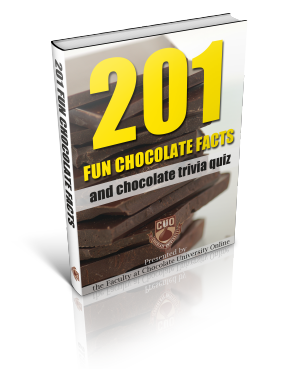Seductive Chocolate: A Dream That Melts in The Mouth
Cocoa was known in Mexico already 2000 years ago, by the Aztecs and Mayas, who cultivated the plant in Central America. The seeds of the tropical tree Theobromo Cacao were the symbol of life and fertility. Cacao was grinded between stones into a dark, bitter paste and prepared with spices, like vanilla, pepper, paprika, ginger and with water and corn flour to a foamy beverage, which was used specifically with religious rituals and celebrations; they called it Tchocolath / xocoatl, bitter water, a gift of the wind God Quetzalcoatl. Montezuma gave it to his warriors against tiredness. Cacao was so valuable that it was used as means of payment.
The cocoa tree grows in moist, dark and wind-protected rain forest, at a temperature between 15 and 35 degrees. Columbus was the first to get in contact with cocoa in the 16thcentury, later Cortés, who brought cocoa to Spain. There, the news was estimated by the aristocracy and a secret formula was used to prepare it sweet and hot in the 17. Century at the French king yard; the first chocolate shop opened in London.
In 1828, the Dutch chemist Conrad Van Houteen invented a press for extracting the cocoa butter. The Swiss Daniel Peters refined it to milk chocolate by his 1876 discovery of milk powder. In 1879 the Swiss chocolate manufacturer Rudolphe Lindt forgot to stop his machine and invented the Conching-process, so he attained the product, that we know today: Chocolate, that melts in the mouth. The Swiss maker of condensed milk Heinrich Nestle produced fine, satin chocolate by adding condensed milk. In 1908, Jean Tobler in Switzerland invented the Alps-shaped triangular Toblerone, and the Italian pastry cook Pietro Ferrero mixed cocoa powder, hazelnuts, cocoa butter, sugar and fat to Nutella. Caramel manufacturer Milton Hersheys began 1895 his production and the Italian Domingo Ghirardelli began producing chocolate for cowboys in San Francisco.
Harvest – processing – manufacturing
Cocoa pods are cut from the tree at harvest with a machete or are clapped from the tree with a stick. The beans with their surrounding pulp are removed from the pods and out into fermenting boxes. This fermentation process lends the bitter, familiar chocolate taste. Immature pods lead to inferior cocoa quality. After fermenting, the beans must be dried immediately, in 5-7 days in order to avoid mold. Now, the beans are toasted and peeled and we obtain cocoa pulp. This is pressed to cocoa butter; after another pressing we obtain the cocoa powder, which contains 12 percent of fat and no sugar.
Approximately 2/3 of the cocoa world-wide is produced at the African Ivory Coast, followed by Ghana, Indonesia and Brazil. 4 million tons of harvest give work to 50 million people world-wide.
We know white chocolate, milk chocolate (addition of milk powder or condensed milk), and dark chocolate, which contains little sugar and up to 70 percent of cocoa. The norms impose at least a cocoa content of 35 percent. Normally soy lecithin or other artificial emulsifiers are added in order to reduce the quantity of the expensive cocoa butter; however, some manufacturers omit this for purity reasons. Plant oils and artificial vanilla taste can be added i mass production in order to cover bad bean quality.
The so-called conching-process is crucial for the smooth texture, that lets the chocolate melt on the tongue. The warm, liquid chocolate is moved for hours, cocoa and sugar particles melt together and the texture smoothens. During crystallizing, there are created stable crystals under heat (30-40 degrees C), so that the chocolate maintains the solid form and doesn’t melt too easily. Chocolate is heat- and moisture-sensitive. Nuts can, fillings etc. can be added, but beware of the caloric value. Chocolate is also used in desserts, cakes, cookies, confectionery, icings and delicious fondues. The ideal storage is with 15 to 17 degree C.
Positive effects
Cocoa, but especially dark chocolate, is proven to positively effect the blood circulation and it has an antioxidant effect (against cancer) as well as an blood pressure lowering effect (through epicatechin), flavonoids show a cardioprotective function, the brain is stimulated, it shows effect on neurotransmitters and endorphin, helps with diarrhea and probably has also an aphrodisiac effect Read more in my article: http://www.bukisa.com/articles/397152_aphrodisiac-recipes-for-two
Due to the increase of the serotonin level, the cannabinoid receptors are activated, phenylethylamine is set free what results in joy, euphoria and increased sensitivity. We call the people, who suffer from chocolate cravings, chocoholics.
Chocolate didn’t show any deterioration of acne in tests. The contained theobromine is however poisonous for dogs, cats u. a. animals, especially young animals.
Chocolate plays an integral part in our culture nowadays. Worldwide, the profit adds up to over 20 billion U.S. dollars annually. First place in the chocolate consumption for Germany, pursued by Switzerland, England, Belgium and Norway. We give chocolate wrapped into shiny paper, for Easter in egg form or filled chocolate boxes with toys inside, for mother day and Valentine’s day in heart form, for birthdays and heavenly gift baskets for Christmas.
Nowadays, chocolaty presents are extremely popular; they can serve as communication medium in order to say: I am sorry, I am in love with you, congratulation to your birthday, have a beautiful trip or I think of you. Of course you know that magic moment when you unwrap that metalized paper and bite off a bit of chocolate, that then melts slowly in the mouth.
Luxury chocolate gift baskets are a great idea for Christmas. Nobody can resist! Same with a Swiss chocolate Fondue on New Year’s Eve. I am going to do a pre-test right now …
Please read my chocolate recipes for chocoholics http://www.bukisa.com/articles/399620_2-recipes-not-only-for-chocoholics
and chocolaty presents http://www.bukisa.com/articles/399622_chocolaty-presents-almost-too-precious-to-give-away-
Written by DrLouisse
Freelancer, consultant, translator, more than 25 years of experience in language teaching (English, French, German, Portuguese), PhD phys. education
where i can get the information about world chocolate poducer and consumer?
Question by cg: where i can get the information about world chocolate poducer and consumer?
which country have the biggest chocolate market? who are the market leaders in chocolate industry? which country consume more chocolate?
Best answer:
Answer by csanda
Biggest producers of chocolate:
1. Ivory Coast (40% of world’s supply)
2. Ghana
3. Indonesia
4. Cameroon
5. Brazil
6. Nigeria
7. Ecuador
Collectively, the above produce 80% of the world’s cocoa supply.
Source: CRB Commodity Yearbook and ED&F Man website
Largest consumers: 2001 had the best breakdown of country demand in CRB Commodity Book. Now this “consumption” is based on basically how much chocolate they make, not eat.
1. US
2. Netherlands
3. Ivory Coast
4. Germany
5. Brazil
6. France
7. UK
8. Malaysia
9. Italy
10. Belgium
11. Former Soviet Union
12. Rest of World
In terms of eating, chocolate consumption goes hand in hand with GDP. Naturally, there are some that are above the curve (e.g. Belgium) and some below the curve (e.g. Japan).
Petra food has a very good graph on chocolate consumption here:
http://info.sgx.com/webipo.nsf/rev+new+ipo+by+company+all/PETRA+FOODS+LIMITED
Download the prospectus and look on page
Look on page 75. It’s a bit Asian-centric, but it has great information on the chocolate industry.
Know better? Leave your own answer in the comments!
Categories: chocolate questions Tags: About, CHOCOLATE, Consumer, Information, poducer, world
Fine Chocolate Tasting @ Chocolate and Love
Are you a chocolate lover? Did you ever have attended a chocolate tasting event? Well the video you are about to see will surely make you crave for chocolate more.
A video being showed to you of a event that happened in Adam Street members club, and it is a chocolate tasting event. You will see how many people are enjoying the taste of chocolate and of course shared their experienced to us.
This will provide you all that has happened on that day, it was 9th of march, year 2011. By watching this, you can learn how to conduct future events like this and enjoy different chocolate!
So enjoy and learn more about this video of Fine Chocoalte Tasting@ Chocolate and Love.
Categories: chocolate videos Tags: CHOCOLATE, Fine, Love, tasting
Q&A: How to make melting chocolate (like the chocolate chips) out of cocoa powder?
Question by Lorie: How to make melting chocolate (like the chocolate chips) out of cocoa powder?
I am trying to figure out how to use cocoa powder to make a meltable chocolate. Like the kind you melt the chocolate chip to make chocolate covered pretzels or cherries etc.
Best answer:
Answer by karat4top
I don’t think you can make that kind of chocolate from cocoa. I can’t get to my substitution information at the moment, but I remember in my Betty Crocker Cookbook there was a way to combine cocoa powder with oil and other stuff to make a similar consistency to melted chocolate of some type. Perhaps check the Betty Crocker site for substitutions? I don’t think you can get it to a consistency to dip anything in, because then it wouldn’t harden.
Give your answer to this question below!
Chocolatiere Electric Chocolate Melting Pot
Chocolatiere Electric Chocolate Melting Pot
- Electric pot for melting chocolate
- Ideal for chocolate fondue, chocolate-covered desserts, or molded chocolates
- Suitable for any kind of chocolate or couverture
- No need to boil water or turn on stove
- Includes: spatula, drip rack, molds, fondue sticks, forks, and recipes
Chocolatiere Electric Chocolate Melting Pot Is perfect for chocolate fondue, making chocolate molds, or deserts
List Price: $ 39.99
Price:
Categories: chocolate products Tags: CHOCOLATE, Chocolatiere, Electric, Melting













